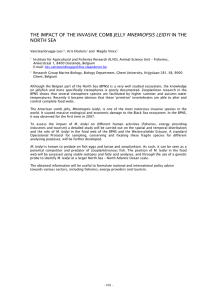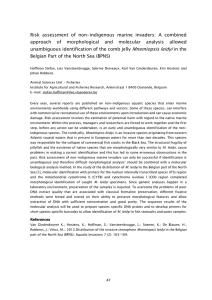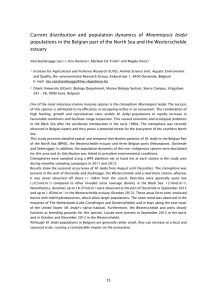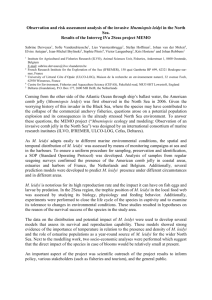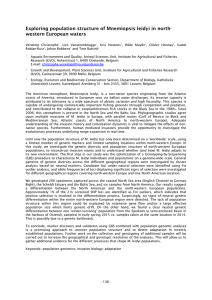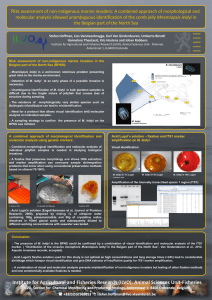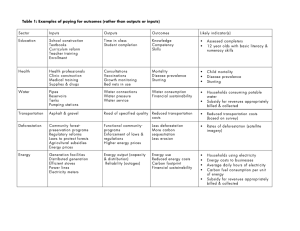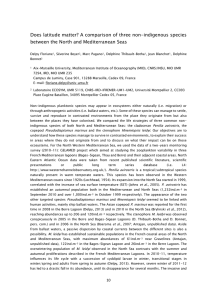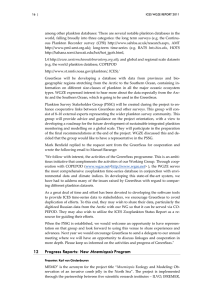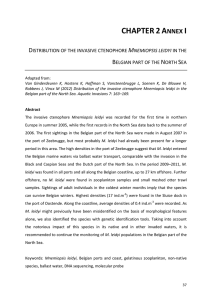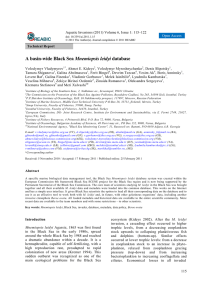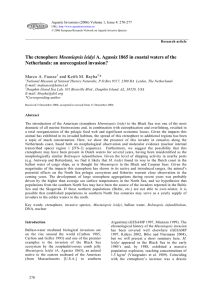In C ase 2a, w e ... H ere, D N A is extracted from ...
advertisement
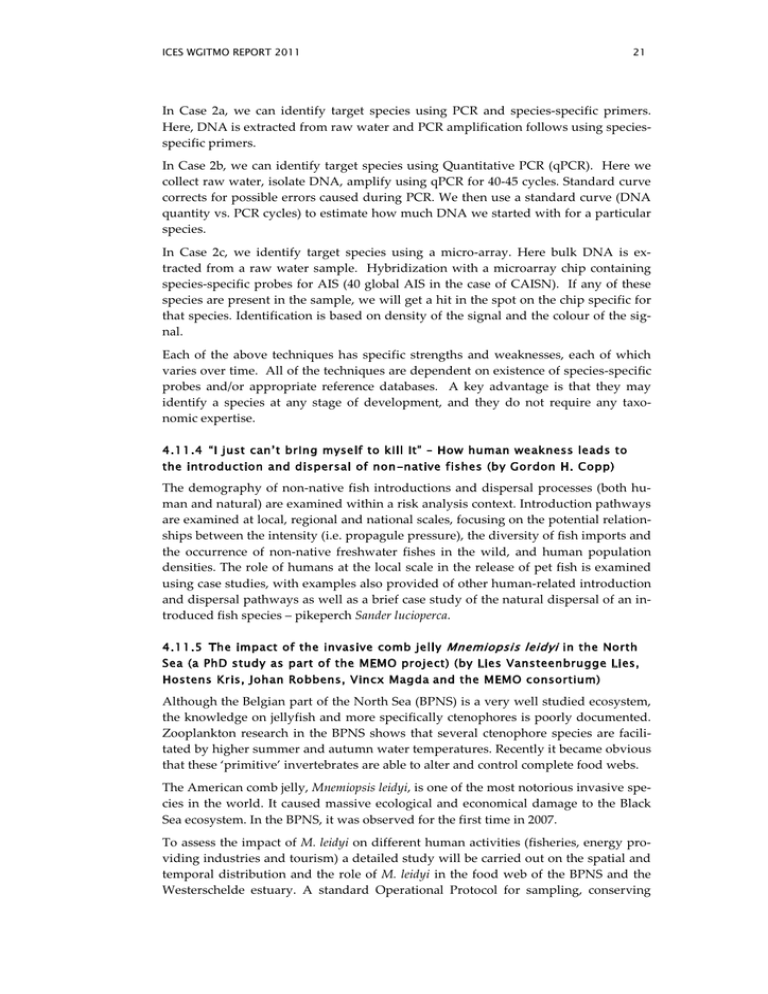
ICES WGITMO REPORT 2011 21 In C ase 2a, w e can identify target species using PC R and species-specific prim ers. H ere,D N A is extracted from raw w ater and PC R am plification follow s using speciesspecific prim ers. In C ase 2b, w e can identify target species using Q uantitative PC R (qPC R ). H ere w e collect raw w ater,isolate D N A ,am plify using qPC R for 40-45 cycles. Standard curve corrects for possible errors caused during PC R . W e then use a standard curve (D N A quantity vs. PC R cycles) to estim ate how m uch D N A w e started w ith for a particular species. In C ase 2c, w e identify target species using a m icro-array. H ere bulk D N A is extracted from a raw w ater sam ple. H ybridization w ith a m icroarray chip containing species-specific probes for A IS (40 global A IS in the case of C A ISN ). If any of these species are present in the sam ple,w e w ill get a hit in the spot on the chip specific for that species. Identification is based on density of the signal and the colour of the signal. Each of the above techniques has specific strengths and w eaknesses, each of w hich varies over tim e. A ll of the techniques are dependent on existence of species-specific probes and/or appropriate reference databases. A key advantage is that they m ay identify a species at any stage of developm ent, and they do not require any taxonom ic expertise. 4.11.4 “I just can’t bring myself to kill it” – How human weakness leads to the introduction and dispersal of non-native fishes (by Gordon H. Copp) The dem ography of non-native fish introductions and dispersal processes (both hum an and natural) are exam ined w ithin a risk analysis context. Introduction pathw ays are exam ined at local,regional and national scales,focusing on the potential relationships betw een the intensity (i.e. propagule pressure),the diversity of fish im ports and the occurrence of non-native freshw ater fishes in the w ild, and hum an population densities. The role of hum ans at the local scale in the release of pet fish is exam ined using case studies,w ith exam ples also provided of other hum an-related introduction and dispersal pathw ays as w ell as a brief case study of the natural dispersal of an introduced fish species – pikeperch Sander lucioperca. 4.11.5 The impact of the invasive comb jelly Mnemiopsis leidyi in the North Sea (a PhD study as part of the MEMO project) (by Lies Vansteenbrugge Lies, Hostens Kris, Johan Robbens, Vincx Magda and the MEMO consortium) A lthough the Belgian part of the N orth Sea (BPN S) is a very w ell studied ecosystem , the know ledge on jellyfish and m ore specifically ctenophores is poorly docum ented. Z ooplankton research in the BPN S show s that several ctenophore species are facilitated by higher sum m er and autum n w ater tem peratures. R ecently it becam e obvious that these ‘prim itive’invertebrates are able to alter and control com plete food w ebs. The A m erican com b jelly,M nemiopsisleidyi,is one of the m ost notorious invasive species in the w orld. It caused m assive ecological and econom ical dam age to the Black Sea ecosystem . In the BPN S,it w as observed for the first tim e in 2007. To assess the im pact of M .leidyi on different hum an activities (fisheries,energy providing industries and tourism ) a detailed study w ill be carried out on the spatial and tem poral distribution and the role of M .leidyi in the food w eb of the BPN S and the W esterschelde estuary. A standard O perational Protocol for sam pling, conserving 22 ICES WGITMO REPORT 2011 and fixating these fragile species for different analysing purposes, will be further developed. M. leidyi is known to predate on fish eggs and larvae and zooplankton. As such, it can be seen as a potential competitor and predator of zooplanktivorous fish. The position of M. leidyi in the food web will be assessed using stable isotopes and fatty acid analyses, and through the use of a genetic probe to identify M. leidyi at a larger North Sea – North Atlantic Ocean scale. The obtained information will be useful to formulate national and international policy advice towards various sectors, including fisheries, energy providers and tourism. This PhD study is a part of the M EM O project (Mnemiopsis Ecology and M odelling: Observation of an invasive comb jelly in the North Sea; www.ilvo.vlaanderen.be/M EM O ), which frames in the Interreg IV a ‘2 Seas’ programme. The M EM O project is a collaboration between ILV O (BE), CEFAS (G B), IFREM ER (FR), U LCO-LOG (FR) and Deltares (NL). 5 Closing of the meeting The meeting was closed at 13:00 on 18th M arch, 2011. The chair thanked IFREM ER for providing the meeting venue and, specifically, Laurence M iossec for ensuring efficient logistics which were a backbone of the success of the meeting. The chair also thanked the meeting participants for their input and the rapporteur, M arie-Claude Fortin, for her extremely operational delivery of the meeting notes.
